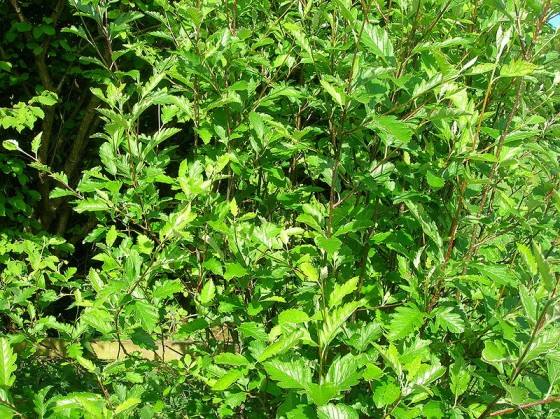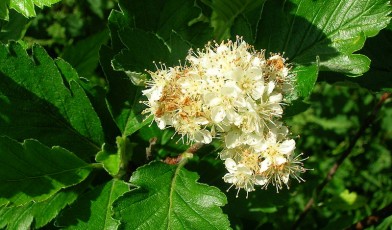Whitebeams (Sorbus spp.) are beautiful trees characterised by their white-backed leaves, white blossom produced in the spring and bright red/orange berries in the autumn. Sorbus arranensis and S. pseudofennica are both found only on the Isle of Arran and are Scotland’s most threatened trees. It is thought that they have evolved in isolation on the island since the last glaciation nearly 11,500 years ago, and have been a component of local woodland since 4,500 B.P. Today their populations are limited to steep-sided gorges and rocky outcrops in the northern part of the island.
S. arranensis and S. pseudofennica were first described by Landsbourgh in 1897, but were not recognised as separate taxa until 1952. In 1956 a National Nature Reserve was established at the site of the biggest known population of the two species, to ensure their long-term survival. According to 2004 surveys, the total population sizes of S. arranensis and S. pseudofennica are 407 and 436 respectively. Such small populations are very susceptible to demographic fluctuations which increase the probability of local extinction by chance. As Sorbus species also reproduce asexually, seedlings are clones of the parent tree. This reduces genetic variation and may make populations more vulnerable to environmental changes.

Sorbus pseudofennica foliage
Today these two species are threatened mainly by habitat loss. A decline in the surrounding woodland has exposed the species to harsh weather conditions and grazing pressure. Strong winds and heavy rain are common on the Isle of Arran, damaging the trees and stunting their growth (which in turn leads to a loss of reproductive potential). Trees are also threatened by grazing from hare and deer.
Trees that are established in well sheltered areas are protected and grow taller, producing flowers and fruit by asexual reproduction. Conservation efforts aim to increase the surrounding woodland at the sites of S. arranensis and S. pseudofennica to provide shelter as well as improving soil quality and reducing soil erosion.
Did you know?
The Global Trees Campaign has supported tree conservation in over 25 countries, implementing conservation projects for over 100 threatened tree species.
